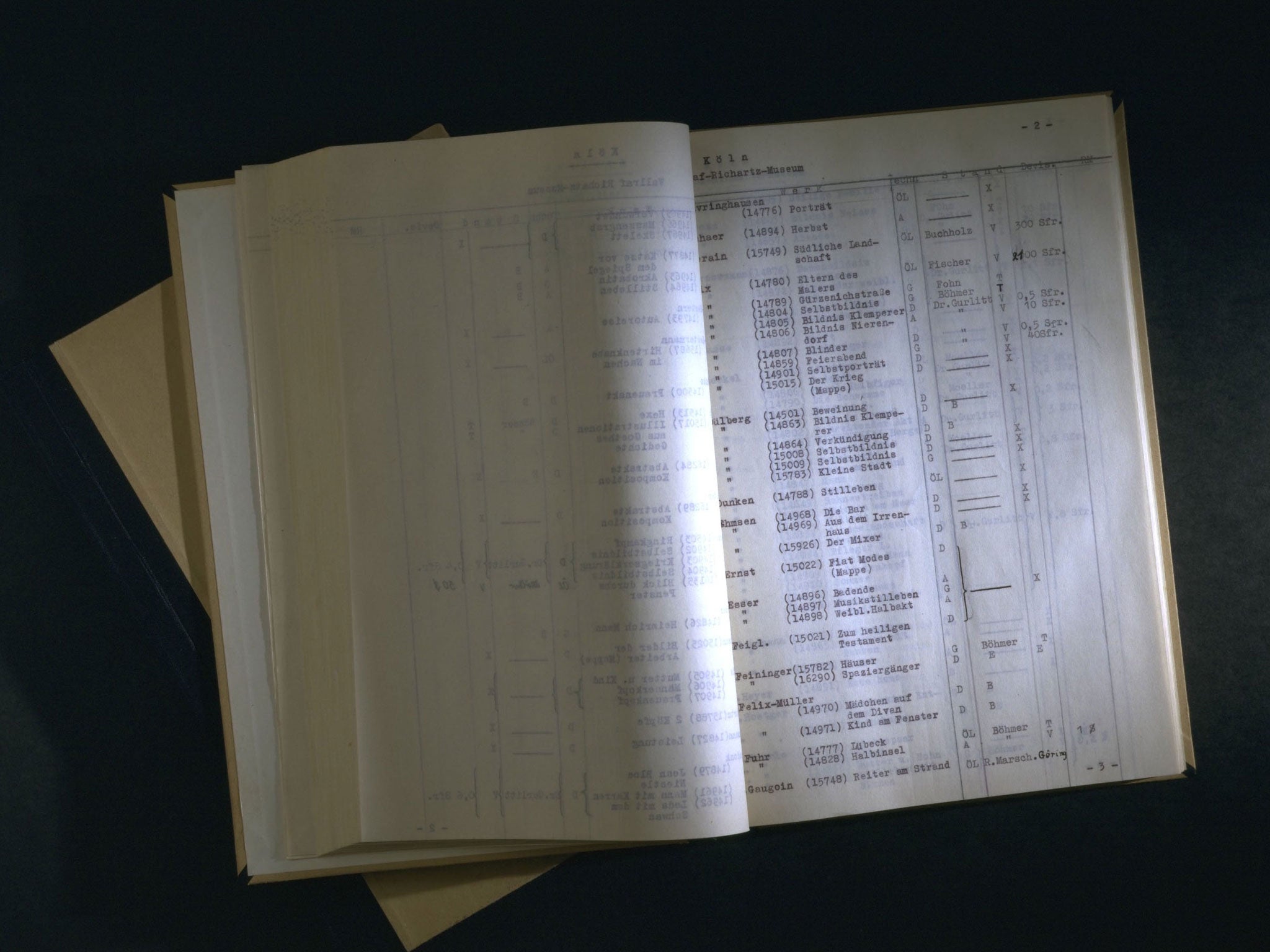V&A museum will publish Hitler's list of 'degenerate art' online for the first time
The full inventory of "Entartete Kunst" will be made available to the public

Shortly before the outbreak of the Second World War, the Nazis confiscated thousands of “degenerate” artworks from galleries across Germany.
The regime kept records of the 16,558 works of modern art that were later sold, loaned or destroyed by artists including such celebrated names as Picasso and Van Gogh.
The V&A in London will this month publish the only surviving full inventory of "Entartete Kunst" – Degenerate Art – online, some 17 years after it came into the collection.
Heike Zech, curator of the Gilbert Collection at the V&A, said: “It’s one of the crucial sources to understand what happened to a lot of these pieces. We want to give everyone the chance to look at the original documents; it’s such a contentious and difficult subject matter.”
It is particularly pertinent coming shortly after it emerged last year that 1,400 modern works were seized in a Munich apartment, from a collection built by Hildebrand Gurlitt. Gurlitt’s name appears several times in the V&A’s document, while it also emerged that Herman Goering had bought three Van Gogh works.
It is part of a wider plan by the museum to digitise its archive material. “The Gurlitt case in Germany has really hammered home the point that this needs to be out now,” Dr Zech said.
In Pictures: 'Degenerate Art'
Show all 7The list was compiled at the height of the Second World War by the Reichsministerium fur Volksaufklärung und Propaganda, the ministry for public enlightenment and propaganda.
Other artists on the list include Paul Klee and Oskar Kokoschka, while one of the more celebrated German artists was Franz Marc. His inclusion caused controversy from war veterans at the time because the artist had fought for Germany in the First World War, dying in 1916.
The art was confiscated by the Nazi regime mainly between 1937 and 1938. Dr Zech said: “It’s mostly what we would regard as modern art now. Anything that wasn’t straightforward and figurative, but abstract and so on, was likely to be confiscated.”
The list, which is typed, compiled alphabetically and split into two volumes, was donated to the V&A by the widow of Heinrich Robert Fischer in 1996 as part of a larger collection of publications on German art.
Fischer was an Austrian-born art dealer who fled to Britain in 1938, before serving in the British Army’s Pioneer Corps during the Second World War.
Dr Zech said it was immediately clear that the Entartete Kunst was “something special. It stood out straight away.” It is the only one of the three surviving copies that contains the second volume listings.
The inventory lists institutions alphabetically by location – from Aachen to Zwickau – and then by location each artist is listed alphabetically. Those with an “x” next to them in the records show those that were destroyed.
“We hope publishing the document online will inspire more research among a wider range of people who otherwise may not have been exposed to it,” Dr Zech, who is also the restitution liaison officer at the V&A, said. “There is still more research to be done on this. It’s a work in progress.”
MORE: Artworks appropriated by the Nazis found in Cornelius Gurlitt's possession
The document has been available to scholars and many have studied it for provenance cases. None of the original pages have been available to the public before now.
The V&A is to put a PDF version of the “Degenerate Art” list online and the research team is currently working on making the document searchable.
In 1938, Entartete Kunst was the title of the exhibition held in Munich in 1938. It was displayed “for education purposes” as examples of bad art. Close by there was an exhibition of “great German art” to outline what art should look like.
Dr Zech said: “The irony of course was that everyone went to see the Degenerate Art exhibition. It was the most visited and popular exhibition of modern art of the time. Only a fraction of the visitors went to the other exhibition.”
Subscribe to Independent Premium to bookmark this article
Want to bookmark your favourite articles and stories to read or reference later? Start your Independent Premium subscription today.
